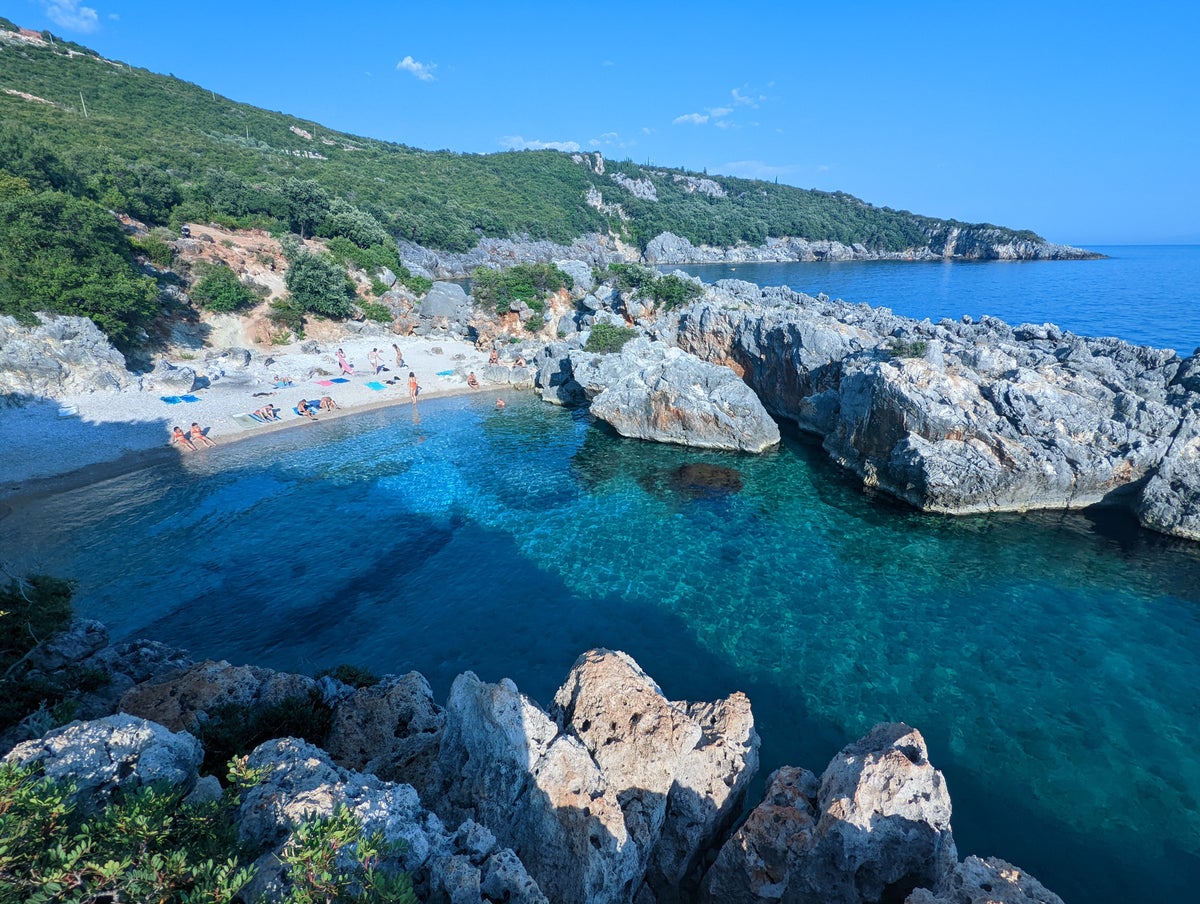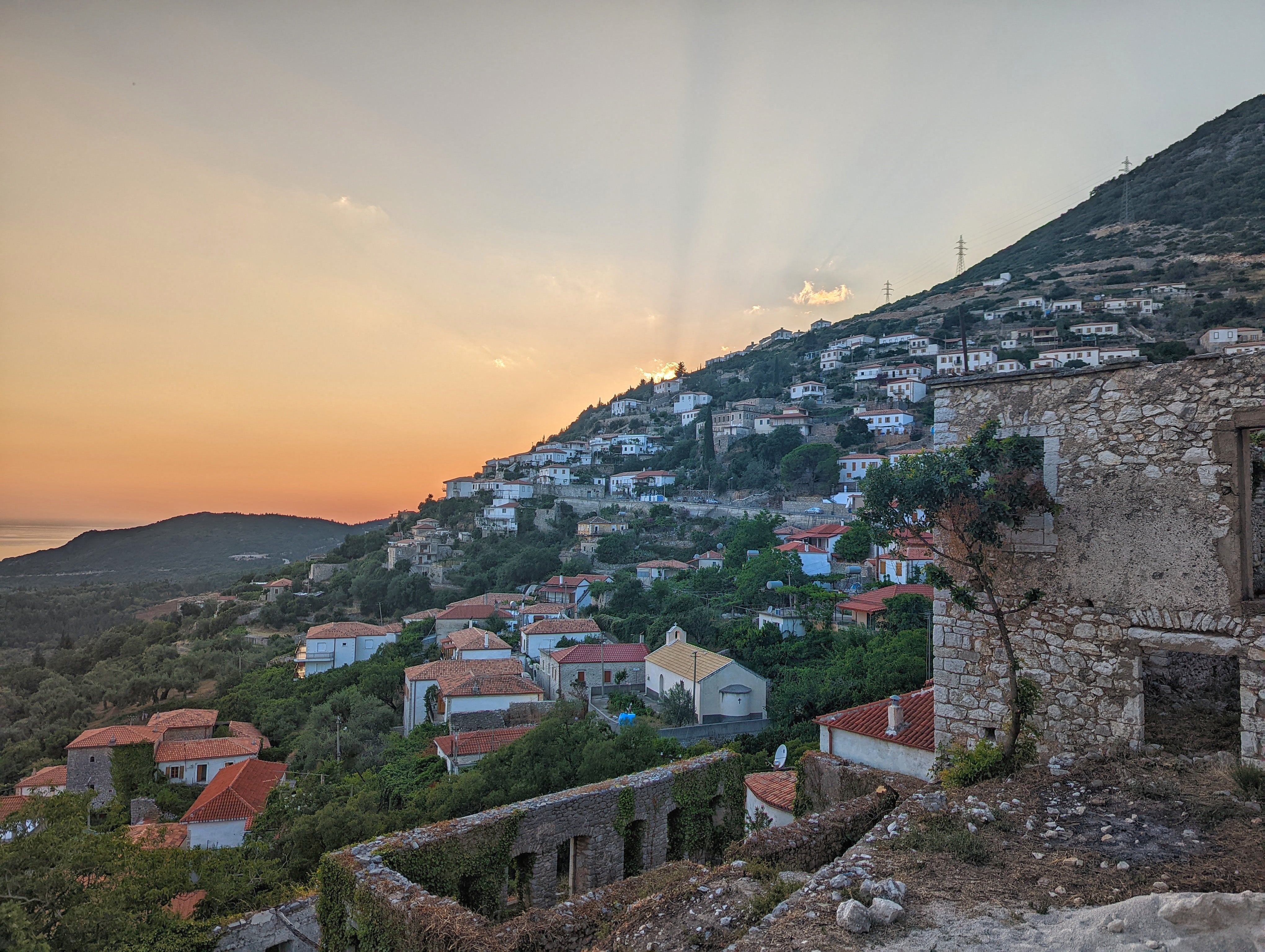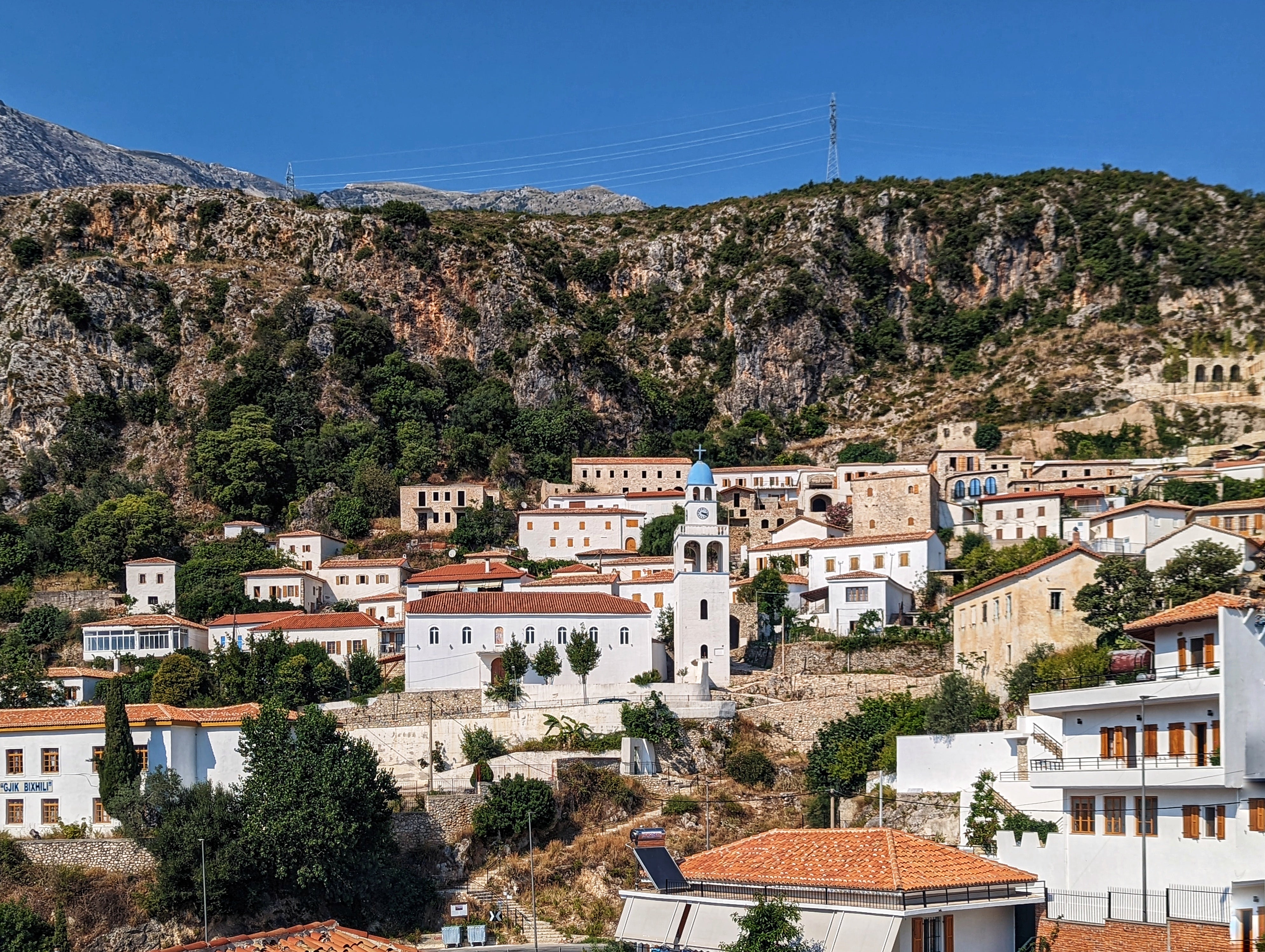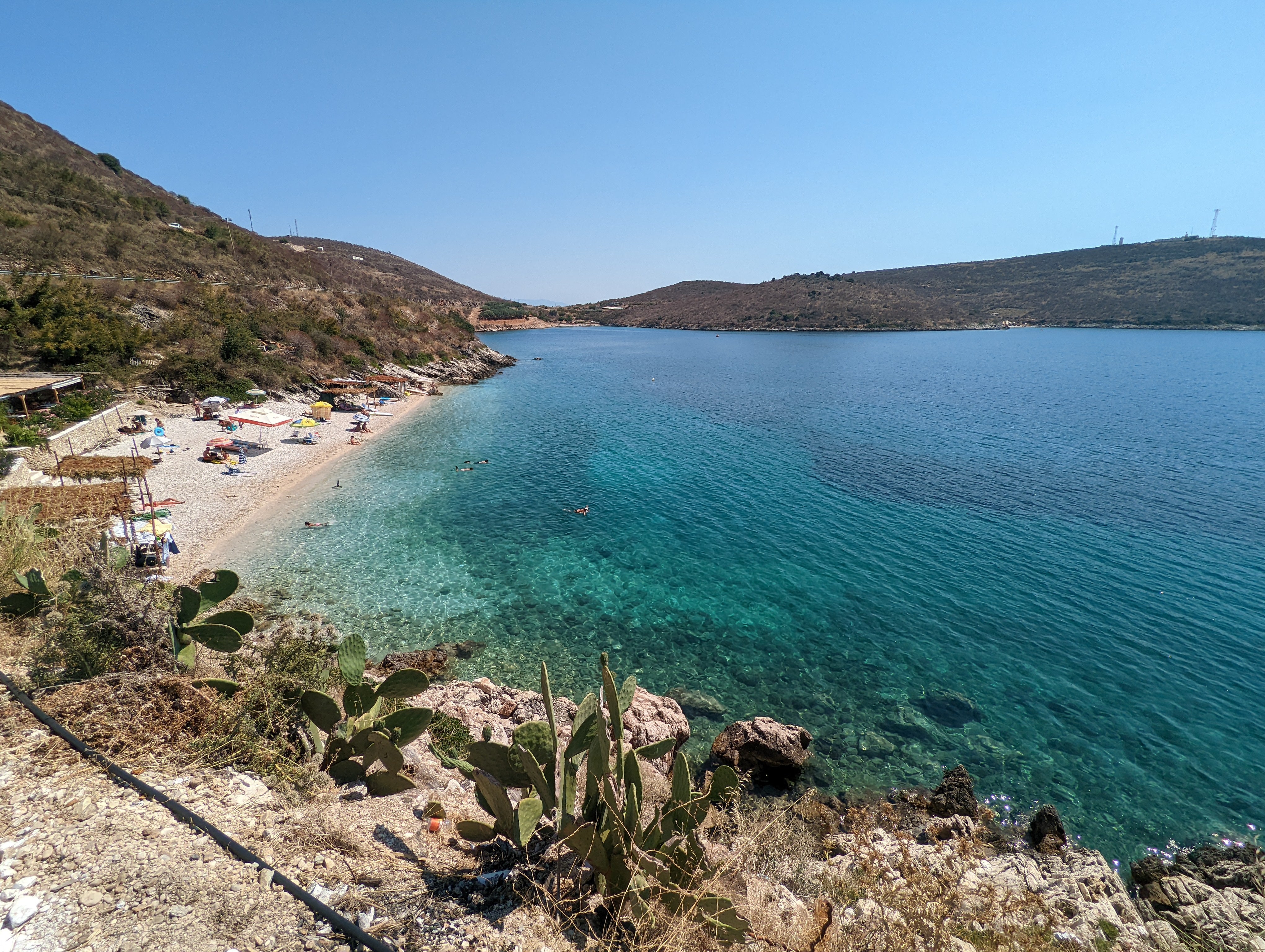
With a mountainous landscape overlooking crystalline waters and relatively sleepy pebble beaches, the Albanian riviera is one of Europe’s best-kept secrets.
Spending a week whizzing between the coves and corners of the riviera – the catch-all name for Albania’s southernmost stretch of coast ‒ was an unexpected delight. Separated from the rest of the country by the rolling Ceraunian mountains, the region stretches 120 kilometres from Vlore to Sarande, taking in beaches, canyons, castles and characterful little seaside towns. Among other ways it’s opened up to tourists, the 2009 rejuvenation of the country’s SH8 coastal road made it easier to explore, be it by bike, car or bus ‒ or in my case, a combination of all three.
To try to describe the beauty of these beaches collectively would do them an injustice, but the headlines are: they are blissfully peaceful, with clear, shimmering waters. They are far less frequented by tourists than neighbouring Greece, meaning you’ll bag accommodation nearby at much more affordable prices. And unlike in the more jaded parts of booked-out Europe, you’ll likely have a host who’s genuinely delighted to have you to stay. Albania was cut off from the world for over 40 years, with communist dictator Enver Hoxha breaking ties with Russia as he believed the USSR was too soft. The people here experienced North Korea levels of isolation for a lengthy chunk of the 20th century ‒ locals alone knew how stunning their landscape was. Now they seem enthused to share the secret.

Assuming you’re flying into Tirana International Airport, any onward travel ‒ be it to the Albanian Alps in the north, Ottoman-era towns in the east or world class beaches in the south ‒ requires either car hire or deciphering the local buses. As a non car-driver, getting to grips with the buses was my first task.
The people here experienced North Korea levels of isolation for a lengthy chunk of the 20th century – locals alone knew how stunning their landscape was
Staff at my Tirana hotel helpfully tipped me off about local bus schedule website gjirafa Travel, telling me that all journeys are paid for on board, so forget pre-booking. I learned that, if you want to get off at a certain village along the bus route, you can let the driver know before you set off and they’ll pull over, even if it’s not a formal stop. Once I figured out the etiquette, I boarded a coach at Tirana’s north & south bus terminal, headed for the maritime city of Vlore. This is the gateway to the riviera, which I’d stop in before taking the coastal SH8 road towards the other end of it, Sarande.
Using my nifty ask the driver trip, I hopped off in Vuno, a postcard-pretty cobblestone village. I quickly spotted its one bar, Bar Lula, run by the inimitable Lula; and one restaurant, Markos, based in a repurposed petrol station. At the latter I tucked into traditional plates of qofte meatballs and grilled fish with vegetables and lashings of tzatziki ‒ all for the princely sum of about £4. Mykonos this was not. The quality of the food here was one of my earliest surprises: huge salads and more fish awaited, along with cheese burek (my favourite Balkan hot pastry dish).
Once I’d settled in, the owner of Vuno’s Shotgun Hostel, Bree Cameron, showed me how she has lovingly renovated the period property with her partner, before setting me up with a hire scooter and sending me off to explore. She attributes Albania’s recent surge in popularity to word of mouth and the country’s laid-back approach to pandemic restriction. “Last year while most European countries were hard to access, Albania was fully open for all to visit. So we saw travellers come from across the world, as well as Balkan countries. The word has spread like this.”

Armed with my Viaggio moped, I set out to visit the riviera beaches and towns, mastering the winding mountain roads that provide majestic views at every turn. The lengthy, family-friendly beaches of Borsh and Qeparo were set apart from their villages by fragrant groves of olive and cypress trees. I found that Himarë, the closest town south of Vuno, was popular with a young, backpackerish crowd, who stroll about its sea level boulevard with a scattering of great bars, restaurants and boat trip operators.
I tucked into traditional plates of qofte meatballs and grilled fish with vegetables and lashings of tzatziki ‒ all for the princely sum of about £4
I hired a pedalo to visit Himare’s hidden neighbour, Filikuri Beach, a pebble-strewn, isolated strand with some of the finest turquoise waters along the riviera. A short drive beyond Himarë I stumbled upon Porto Palermo, named after its fortress, which sits defensively on a small island connected to the mainland. The area is a treasure trove of tiny unmarked coves to conquer and laze on, all half-visible from the road.
My favourite bits of coast, though, were the untouched, wilder bays at the north end of Dhermi’s beach. I sweated through a bit of a climb to reach its three adjoining, practically empty beaches – thankfully not so taxing that it couldn’t be done in sandals. The stunning azure waves were fed by a cold water spring from the mountains, flowing out from under the seabed and making the water invitingly cold, post-scramble.

Chatting to locals, they told me the opposite end of Dhermi beach was famous for its electronic music festivals, such as UK-founded Kala Festival and local Turtle Fest, with the area’s bijou beach clubs ramping up to a party setting in certain months. Bruno Brazhda, manager of pretty beach bar Rose by Havana told me that Kala in particular has done wonders for spreading the word about Dhermi’s cool, transparent waters.
The stunning azure waves were fed by a cold water spring from the mountains, flowing out from under the seabed and making the water invitingly cold
“Kala brings 2,500 Brits over for a week in June, and they have one more event in September. Word spreads this way,” he explained, slinging me a local Korca beer. He added that last year the riviera saw an unexpected surge in popularity. “We were so busy here, as locals had nowhere else to go while Greece and Italy were closed. Many Macedonians, Germans and Polish came too.” Being one of the only countries fully open in summer 2021 had its advantages.
And despite the Albanian tourist board saying 2022’s visitor numbers are up by 45 per cent on last year, I struggle to find one beach that feels overtouristed or remotely packed. Even in the last two weeks of July. On of the more set-up coves, Jale Beach, is lined with bars and restaurants, plus neat sun loungers and bamboo umbrellas laid out for punters ‒ yet none are full.
Jale is also home to the luxurious Folie Marine Resort & Club, where ex-Navy man turned PADI instructor Elton Rukaj (Ruku to his friends) runs Oazi Blue Diving Centre. He remembers this beach 15 years ago, “There was nothing here at all, no bars or resorts. It was a true paradise.” It’s a good example of how this is a work in progress, a region still in development and on the ascent. If you’re tempted to swap Greece for a trip to Albania’s emptier shores, the time to go is now.







